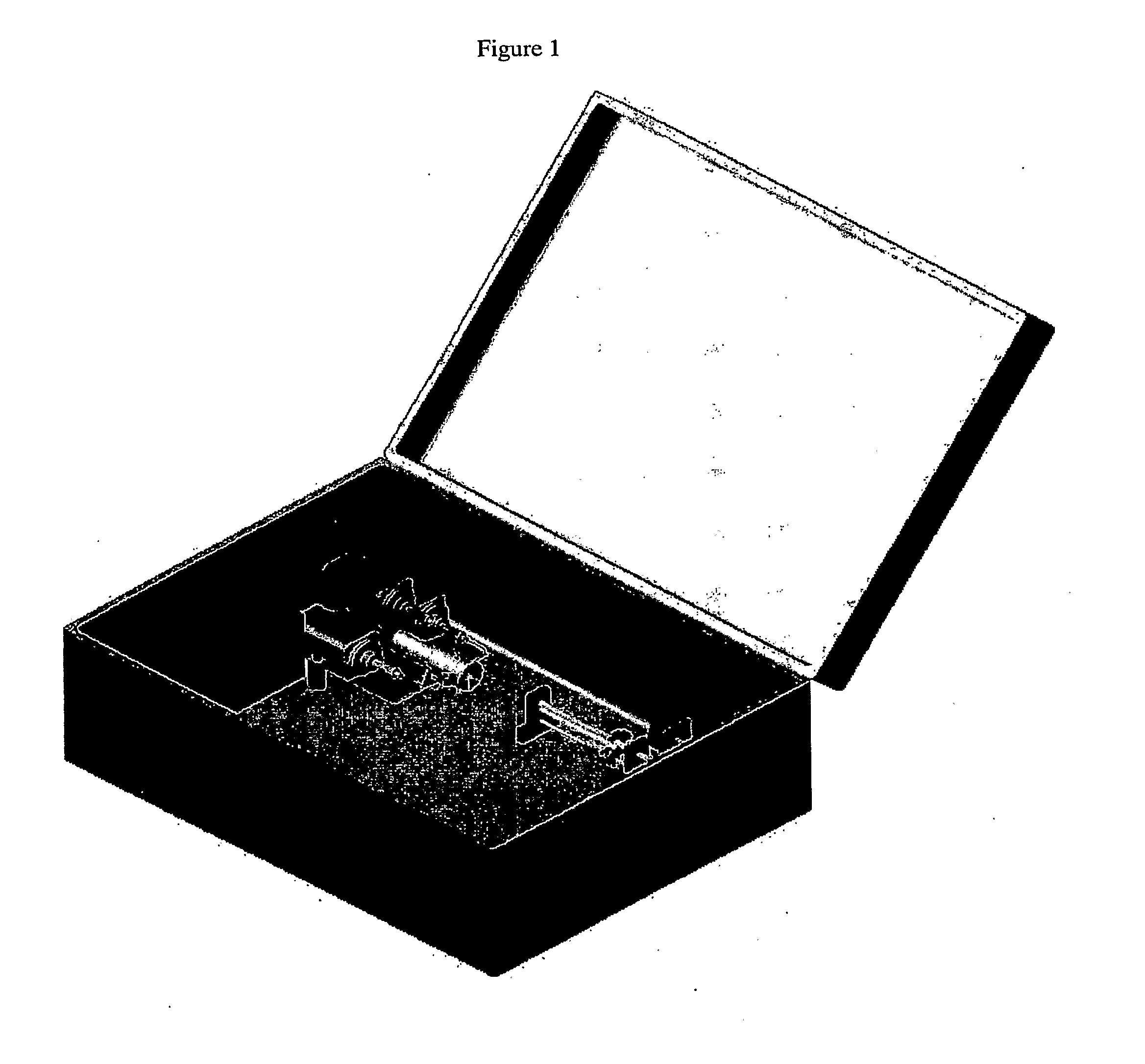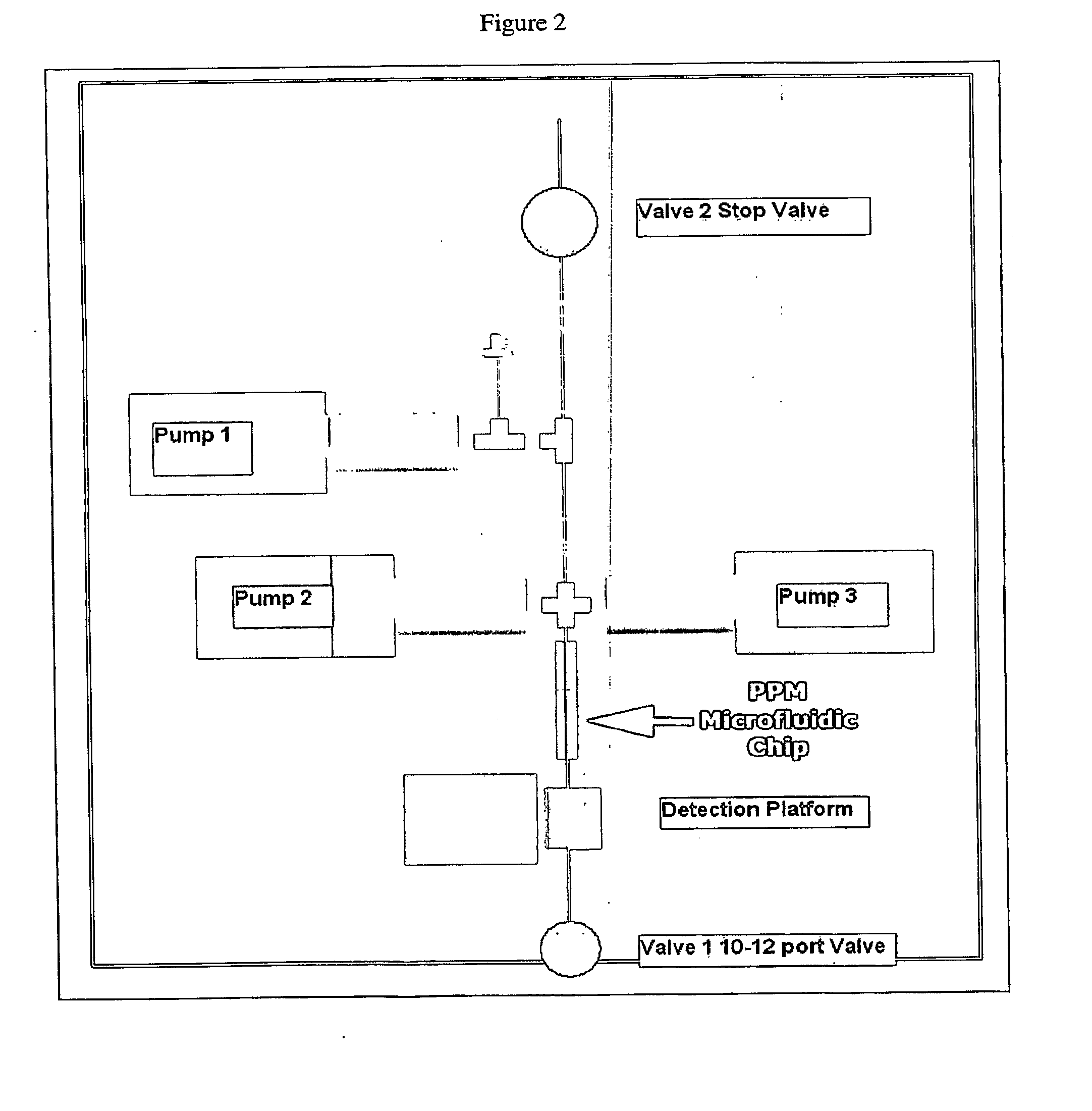Pcr-free sample preparation and detection systems for high speed biologic analysis and identification
- Summary
- Abstract
- Description
- Claims
- Application Information
AI Technical Summary
Benefits of technology
Problems solved by technology
Method used
Image
Examples
example i
[0097]Examples for the use of sample preparation and analysis systems of the present invention are shown in the figures. An integrated detection apparatus can be used with a variety of sample matrices to perform fully automated sample preparation, hybridization and detection of sample analytes. Hybridization is accomplished using a linear porous microarray system, which dramatically reduces the diffusion distance and time to accomplish instantaneous capture and detection of the sample analyte. Detection of analytes is performed using an integrated fluorescence detection platform in combination with the use of nucleic acid and protein detection probes, including but not limited to the use of Tentacle probes as described in “Cooperative Probes and Methods of Using Them”, PCT / US07 / 63229, filed Mar. 2, 2007, the entirety of which is incorporated by reference herein. Other capture probes can be added to create higher order tentacle probes. All of these detection probes can also be substi...
example ii
Cell Suspension
[0098]Using the sample preparation and analysis system, the time required for sample preparation is dramatically reduced. A variety of sample Matrices can be applied to the sample preparation and analysis system platform using making use of the disposable card apparatus. One such example is the use of cells in suspension. A variety of cell suspension types can be prepared for analysis using the sample preparation and analysis system card. These include, bacteria cells, virus, eukaryotic cells, plant cells. In one such example hepatocytes is suspension are centrifuged to pellet the intact cells. One pelleted the cells are resuspended in buffer containing a detergent (Triton-X100), a salt (NaPO4, TMAC, NaCL) in buffered water (pH 7.4). Once in the lysis buffer the cell suspension is deposited in the sample vial located a the top of the consumable card (i.e., disposable card apparatus) as illustrated in FIGS. 15 A-C, which depict front, exploded and bac...
example iii
[0099]Another example is the use of tissue biopsies. A variety of tissue biopsy types can be prepared for analysis using the sample preparation and analysis system card. In one such example a sample containing biopsy liver cells are prepared and analyzed. The biopsy liver cells are resuspended in buffer containing a detergent (Triton-X100) and a salt (NaPO4, TMAC, NaCL) in buffered water (pH 7.4). Once in the lysis buffer the tissue suspension is homogenized using a Polytron homogenizer. The homogenized sample is then deposited in the sample vial located at the top of a consumable card, such as the one depicted in FIGS. 15 A-C. The vial is then capped, a the card is inserted into to the sample preparation and analysis system instrument. Once inserted in to the instrument, an automated script actuates several pumps to transport the sample in to the lysis chamber, where the sample is heated to a temperature range between 50-110° C. During this process th...
PUM
 Login to View More
Login to View More Abstract
Description
Claims
Application Information
 Login to View More
Login to View More - R&D
- Intellectual Property
- Life Sciences
- Materials
- Tech Scout
- Unparalleled Data Quality
- Higher Quality Content
- 60% Fewer Hallucinations
Browse by: Latest US Patents, China's latest patents, Technical Efficacy Thesaurus, Application Domain, Technology Topic, Popular Technical Reports.
© 2025 PatSnap. All rights reserved.Legal|Privacy policy|Modern Slavery Act Transparency Statement|Sitemap|About US| Contact US: help@patsnap.com



